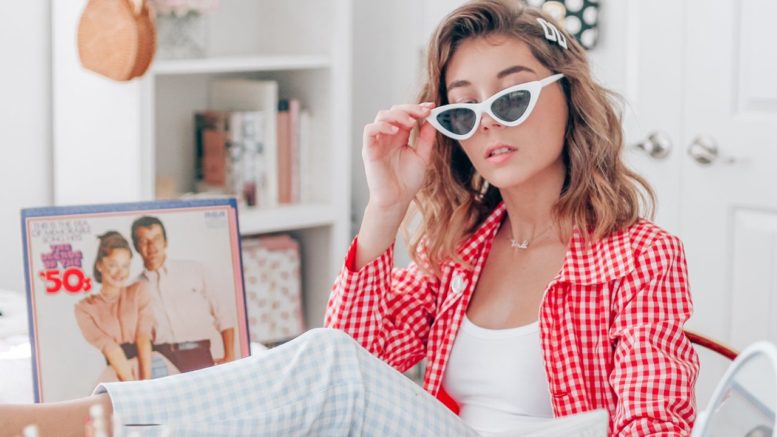By Lauren Piskothy | gargoyle@flagler.edu
Mom jeans are in style, and grandpa sweaters are all the rage; vintage clothing is steadily becoming the future of fashion. Thrift stores are thriving as retailer giants like Forever 21 and H&M continue to close more stores.
The United States Census Bureau released a current study by America’s Research Group confirming the resurgence of re-sale shoppers. Around 16 to 18 percent of U.S. shoppers will go to thrift store in a given year, and about 12 to 15 percent will shop in resale or consignment shops. In comparison, 11.4 percent of consumers shop in outlet malls, 19.6 percent in apparel stores and 21.3 percent in major department stores.
Combine all the facts and numbers, and it’s no surprise students like Reilly Shanahan rely primarily on thrift shopping to acquire their clothing.
“I like the process of thrifting,” said Shanahan, a Flagler College senior. “I prefer going to the thrift store and finding the most wonderful shirt that feels like it was made just for you — as opposed to going to a regular store where I find a cute shirt that requires me to ask for a small, medium or large. Mostly, I like that the clothes have had a life or many lives before they’re mine.”
Not only is thrifting a more personalized experience, but it also has economic and environmental benefits.
“It’s affordable, and saving money is always a plus,” she said. “It’s even better that the clothes are being repurposed and being worn instead of being thrown away and creating waste while it has the potential to be used still.”
Shanahan didn’t depend on thrifting for all of her clothing until recently, she said.
“I discovered thrifting in high school, but it was mainly for costumes and odd ball items. In college, I found that thrifting is the alternative to shopping at a store, and then I began thrifting for the majority of my clothes,” she said.
Local fashion influencer Bradi Rother, who runs the Instagram account, “stylincafe,” has also come to rely on thrifting to fill out her wardrobe.
“I started thrifting a couple of years ago, but I’ve been solely thrifting for about four months now,” Rother said. “Thrifting is important to me because as someone who enjoys fashion and styling different outfits together every day, I need a variety of clothing choices. Where I used to turn to the mall and fast fashion, I’ve now shifted to slow fashion with thrift stores and second hand items.”
Much like Shanahan, Rother has also noticed a shift towards thrifting.
“Social media has contributed greatly to this new attitude, and many people have shared their shift to slow fashion since its ‘trendy’ now to thrift and see what you can find,” she said. “The ’80s and ’90s styles are coming back, which are styles you can easily replicate with second hand clothing.”
Along with the ease of replicating in-style fashion, the sustainability of thrifting is an important aspect to Rother and to social media consumers, she said.
The rise in popularity of sustainable fashion and thrift shopping has not only affected customers and social media consumers, but also local businesses like The Closet in Downtown St. Augustine. The owner of The Closet, Sarah Kersey, has an intimate relationship with thrifting and has seen how greatly it can benefit local second hand boutiques like hers.
“Taking over the shop has been something I’ve always wanted to do,” Kersey said. “I lost sight of it but this opportunity fell in my lap, and I had to take it. I really love helping people find their perfect outfit and being able to piece outfits together. Sustainable fashion is key for the staple items in your closet. For instance, a good pair of denim pairs with everything.”
Kersey noticed a trend in shopping small and up-cycling, which has become an essential part of curating older clothes and making them new. Not only is it trendy, but it’s also sustainable, she said.
“I have seen a start of people shopping small more, and making a conscious effort to do so. I’ve also noticed how thrifting has become a trend,” she said. “I think it’s a great step in the direction of people being less wasteful. Growing up I loved to go thrifting and make whatever I found into what I wanted. I loved up-cycling my thrifted finds.”



Be the first to comment on "Vintage: the future of fashion"